Stefan Schwarz
Hybrid Channel Modeling and Environment Reconstruction for Terahertz Monostatic Sensing
Nov 12, 2024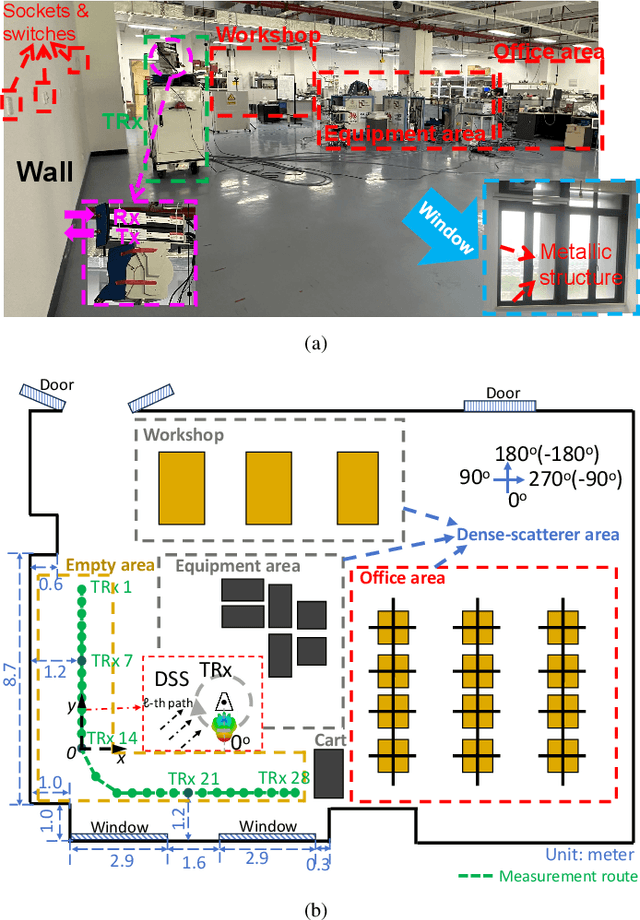
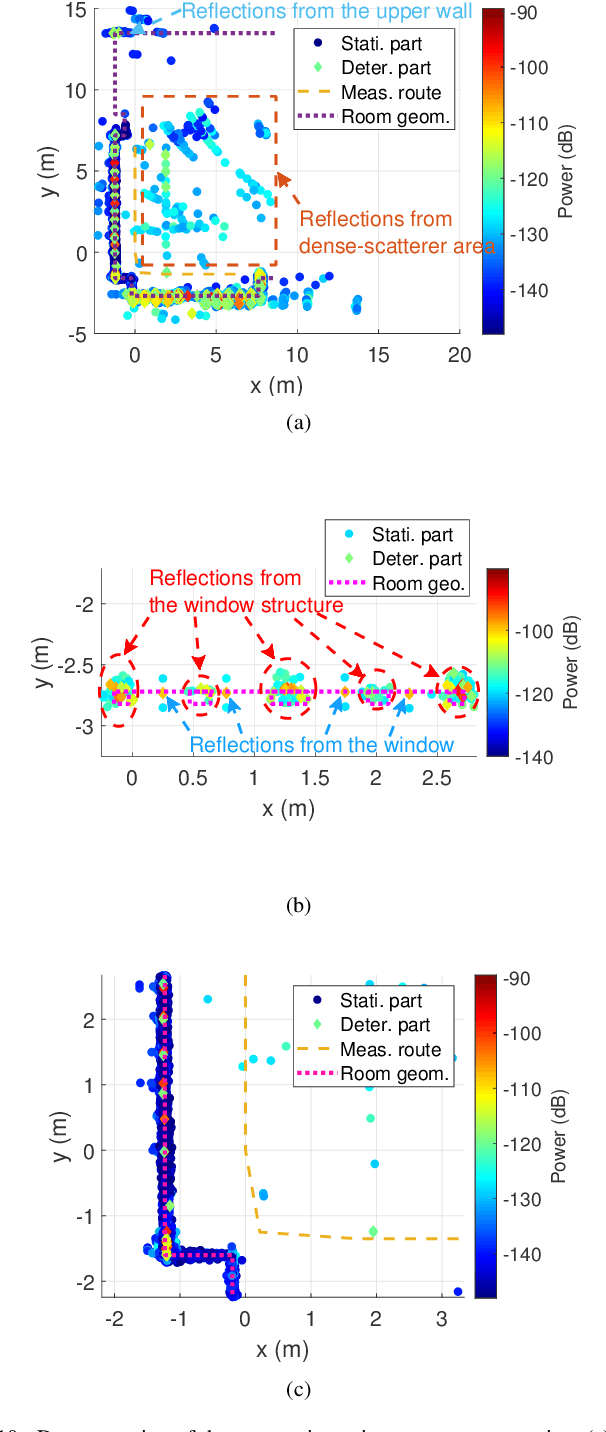

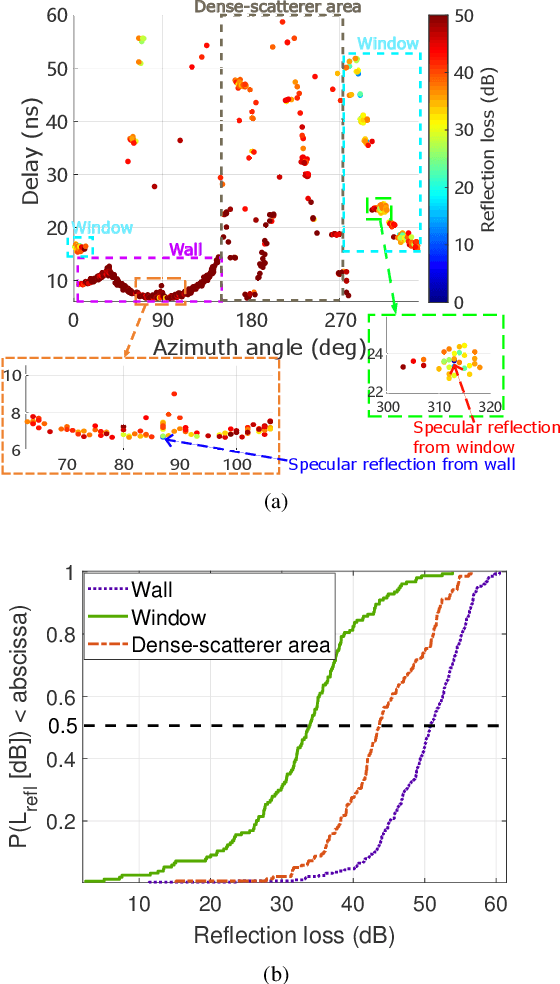
Abstract:THz ISAC aims to integrate novel functionalities, such as positioning and environmental sensing, into communication systems. Accurate channel modeling is crucial for the design and performance evaluation of future ISAC systems. In this paper, a THz measurement campaign for monostatic sensing is presented. VNA-based channel measurements are conducted in a laboratory scenario, where the transmitter and receiver are positioned together to mimic monostatic sensing. The centering frequency and measured bandwidth for these measurements are 300 GHz and 20 GHz, respectively. A DSS scheme is employed to capture spatial sensing channel profiles. Measurements are conducted across 28 transceiver locations arranged along an 'L'-shaped route. Then, an element-wise SAGE algorithm is used to estimate the MPC parameters, i.e., amplitude and delay. Specular and diffuse reflections are analyzed based on geometric principles and the estimated MPC parameters, where the effects from the radiation pattern are observed. A geometry-based MPC trajectory tracking algorithm is then proposed to classify the MPCs and de-embed the effects of the radiation pattern. Following this algorithm, a hybrid channel model is proposed based on the de-embedded MPC parameters. In this hybrid channel model for monostatic sensing, the MPCs are categorized into target-related and environment-related components. The target-related components are utilized for target detection and identification, while the environment-related ones focus on geometrical scenario reconstruction. A demonstration of geometrical environment reconstruction, along with an analysis of reflection loss for target identification, is subsequently presented. This work offers valuable insights into THz monostatic sensing channel modeling and the design of future THz ISAC systems.
Channel Estimation for mmWave MIMO using sub-6 GHz Out-of-Band Information
Nov 16, 2023Abstract:Future wireless multiple-input multiple-output (MIMO) communication systems will employ sub-6 GHz and millimeter wave (mmWave) frequency bands working cooperatively. Establishing a MIMO communication link usually relies on estimating channel state information (CSI) which is difficult to acquire at mmWave frequencies due to a low signal-to-noise ratio (SNR). In this paper, we propose three novel methods to estimate mmWave MIMO channels using out-of-band information obtained from the sub-6GHz band. We compare the proposed channel estimation methods with a conventional one utilizing only in-band information. Simulation results show that the proposed methods outperform the conventional mmWave channel estimation method in terms of achievable spectral efficiency, especially at low SNR and high K-factor.
Self-Supervised and Invariant Representations for Wireless Localization
Feb 14, 2023Abstract:In this work, we present a wireless localization method that operates on self-supervised and unlabeled channel estimates. Our self-supervising method learns general-purpose channel features robust to fading and system impairments. Learned representations are easily transferable to new environments and ready to use for other wireless downstream tasks. To the best of our knowledge, the proposed method is the first joint-embedding self-supervised approach to forsake the dependency on contrastive channel estimates. Our approach outperforms fully-supervised techniques in small data regimes under fine-tuning and, in some cases, linear evaluation. We assess the performance in centralized and distributed massive MIMO systems for multiple datasets. Moreover, our method works indoors and outdoors without additional assumptions or design changes.
Attention Aided CSI Wireless Localization
Mar 20, 2022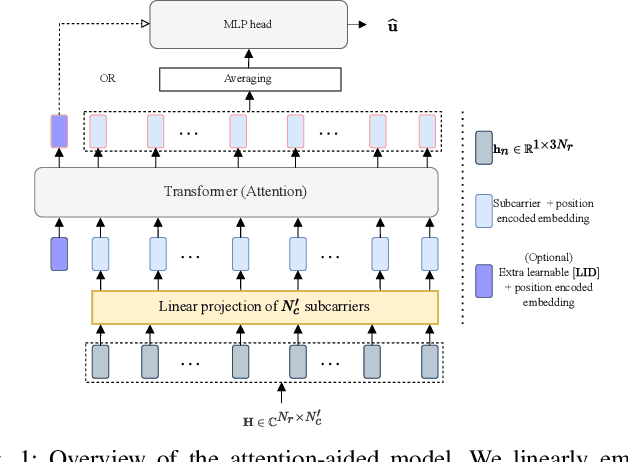
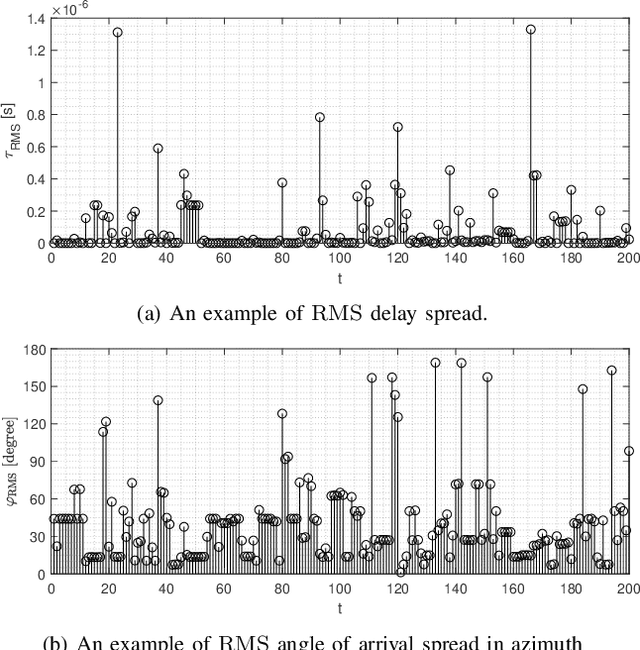


Abstract:Deep neural networks (DNNs) have become a popular approach for wireless localization based on channel state information (CSI). A common practice is to use the raw CSI in the input and allow the network to learn relevant channel representations for mapping to location information. However, various works show that raw CSI can be very sensitive to system impairments and small changes in the environment. On the contrary, hand-designing features may hinder the limits of channel representation learning of the DNN. In this work, we propose attention-based CSI for robust feature learning. We evaluate the performance of attended features in centralized and distributed massive MIMO systems for ray-tracing channels in two non-stationary railway track environments. By comparison to a base DNN, our approach provides exceptional performance.
Impact of Channel Correlation on Subspace-Based Activity Detection in Grant-Free NOMA
Feb 22, 2022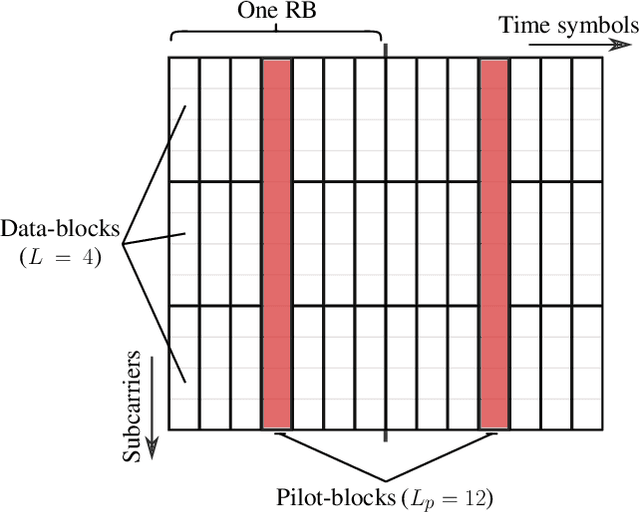


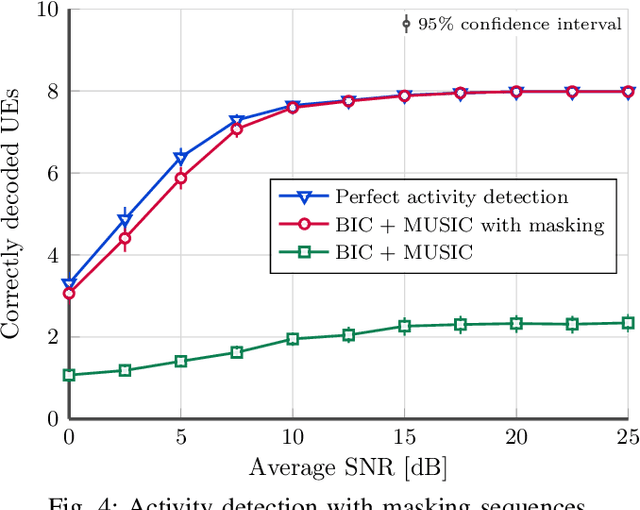
Abstract:In this paper, we consider the problem of activity detection in grant-free code-domain non-orthogonal multiple access (NOMA). We focus on performing activity detection via subspace methods under a setup where the data and pilot spreading signatures are of different lengths, and consider a realistic frame-structure similar to existing mobile networks. We investigate the impact of channel correlation on the activity detection performance; first, we consider the case where the channel exhibits high correlation in time and frequency and show how it can heavily deteriorate the performance. To tackle that, we propose to apply user-specific masking sequences overlaid on top of the pilot signatures. Second, we consider the other extreme with the channel being highly selective, and show that it can also negatively impact the performance. We investigate possible pilots' reallocation strategies that can help reduce its impact.
Learning-based Remote Radio Head Selection and Localization in Distributed Antenna System
Nov 07, 2021

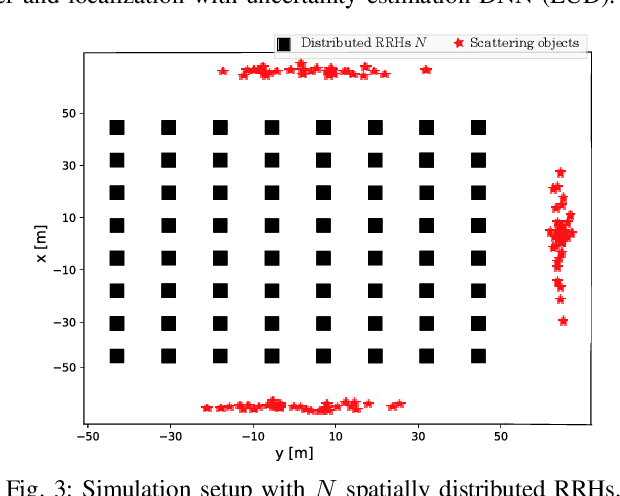
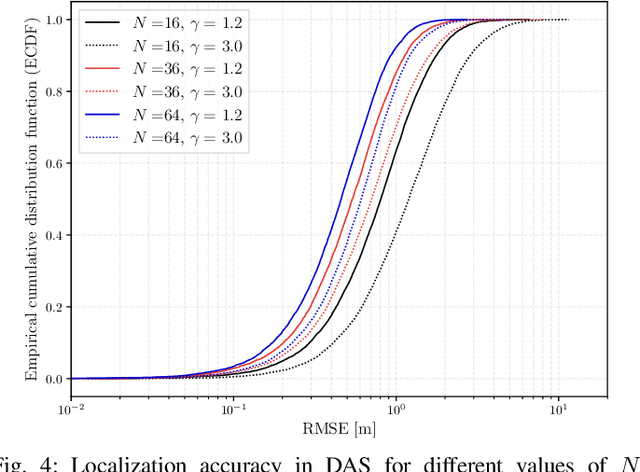
Abstract:In this work, we consider estimating user positions in a spatially distributed antenna system (DAS) from the uplink channel state information (CSI). However, with the increased number of remote radio heads (RRHs), collecting CSI at a central unit (CU) can significantly increase the fronthaul overhead and computational complexity of the CU. This problem can be mitigated by selecting a subset of RRHs. Thus, we present a deep learning-based approach to select a subset of RRHs for wireless localization. We employ an RRH selection layer that is jointly trained with the rest of the network and learn the model parameters as well as the set of selected RRHs. We show that the selection strategy comes at a relatively small cost of localization performance. Nonetheless, by comparison to a trivial approach based on the maximization of the channel gain, we show that the proposed method leads to significant performance gains in a propagation environment dominated by non-line-of-sight.
Towards Scalable Uncertainty Aware DNN-based Wireless Localisation
Jun 08, 2021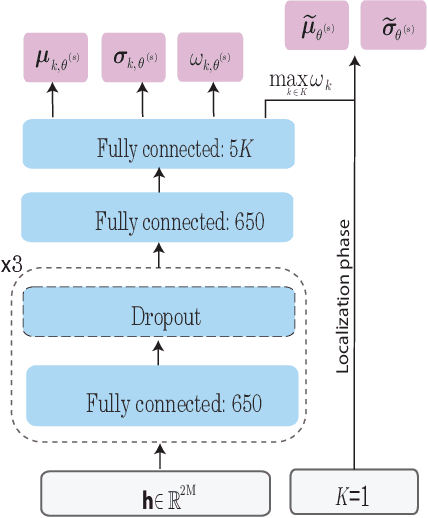

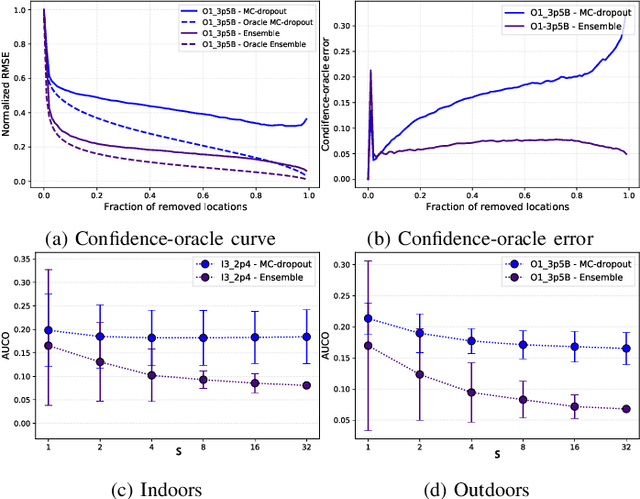
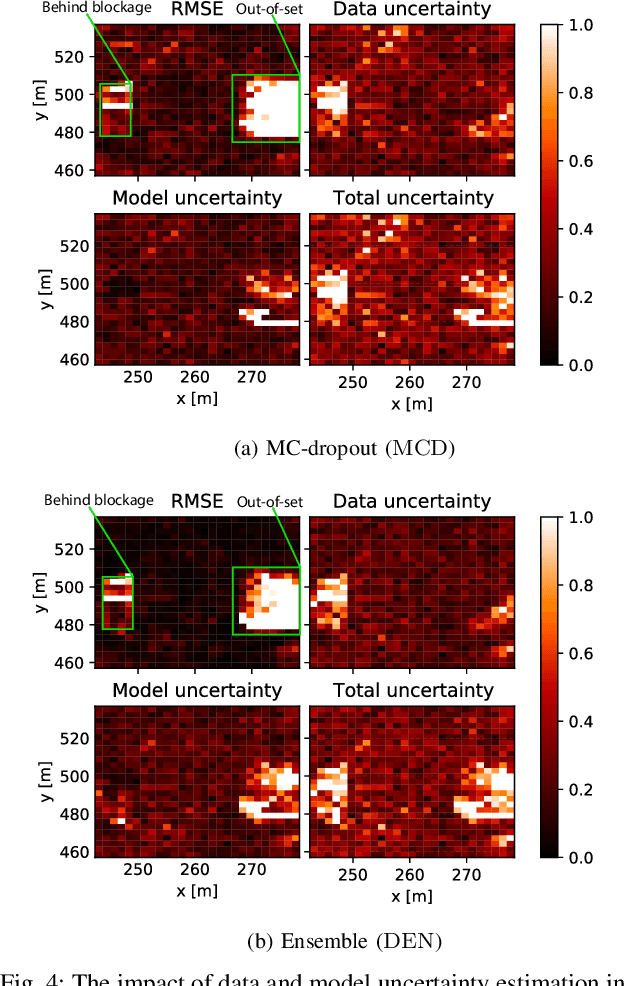
Abstract:Existing deep neural network (DNN) based wireless localization approaches typically do not capture uncertainty inherent in their estimates. In this work, we propose and evaluate variational and scalable DNN approaches to measure the uncertainty as a result of changing propagation conditions and the finite number of training samples. Furthermore, we show that data uncertainty is sufficient to capture the uncertainty due to non-line-of-sight (NLOS) and, model uncertainty improves the overall reliability. To assess the robustness due to channel conditions and out-of-set regions, we evaluate the methods on challenging massive multiple-input multiple-output (MIMO) scenarios.
RIS-Assisted Code-Domain MIMO-NOMA
Mar 11, 2021



Abstract:We consider the combination of uplink code-domain non-orthogonal multiple access (NOMA) with massive multiple-input multiple-output (MIMO) and reconfigurable intelligent surfaces (RISs). We assume a setup in which the base station (BS) is capable of forming beams towards the RISs under line-of-sight conditions, and where each RIS is covering a cluster of users. In order to support multi-user transmissions within a cluster, code-domain NOMA via spreading is utilized. We investigate the optimization of the RIS weights such that a large number of users is supported. As it turns out, it is a coupled optimization problem that depends on the detection order under interference cancellation and the applied filtering at the BS. We propose to decouple those variables by using sum-rate optimized weights as the initial solution, allowing us to obtain a decoupled estimate of those variables. Then, in order to determine the final weights, the problem is relaxed into a semidefinite program that can be solved efficiently via convex optimization algorithms. Simulation results show the effectiveness of our approach in improving the detectability of the users.
Outage Analysis of Uplink IRS-Assisted NOMA under Elements Splitting
Mar 02, 2021



Abstract:In this paper, we investigate the outage performance of an intelligent reflecting surface (IRS)-assisted non-orthogonal multiple access (NOMA) uplink, in which a group of the surface reflecting elements are configured to boost the signal of one of the user equipments (UEs), while the remaining elements are used to boost the other UE. By approximating the received powers as Gamma random variables, tractable expressions for the outage probability under NOMA interference cancellation are obtained. We evaluate the outage over different splits of the elements and varying pathloss differences between the two UEs. The analysis shows that for small pathloss differences, the split should be chosen such that most of the IRS elements are configured to boost the stronger UE, while for large pathloss differences, it is more beneficial to boost the weaker UE. Finally, we investigate a robust selection of the elements' split under the criterion of minimizing the maximum outage between the two UEs.
Low-Complexity Zero-Forcing Precoding for XL-MIMO Transmissions
Mar 01, 2021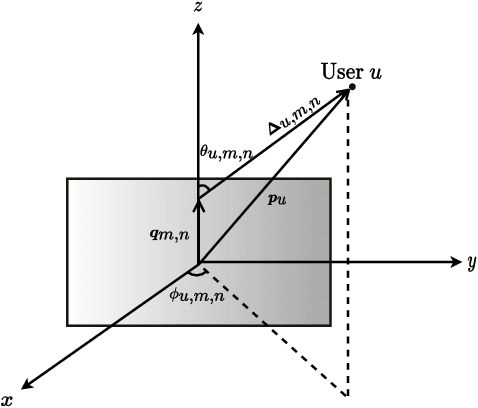
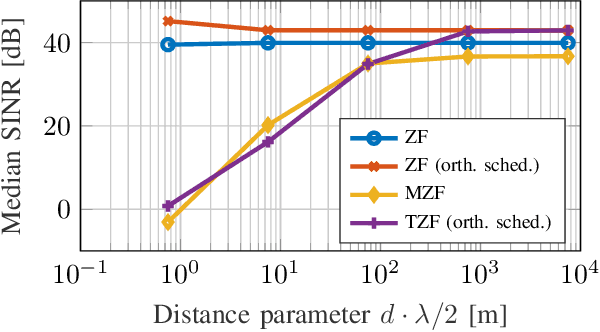
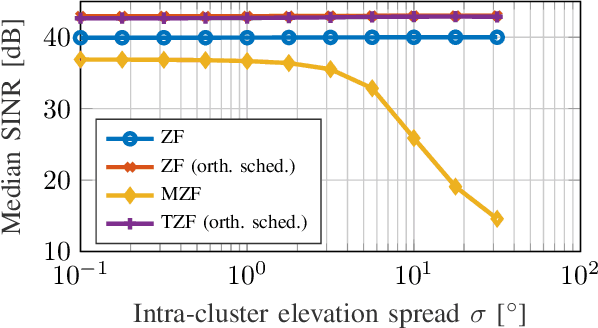
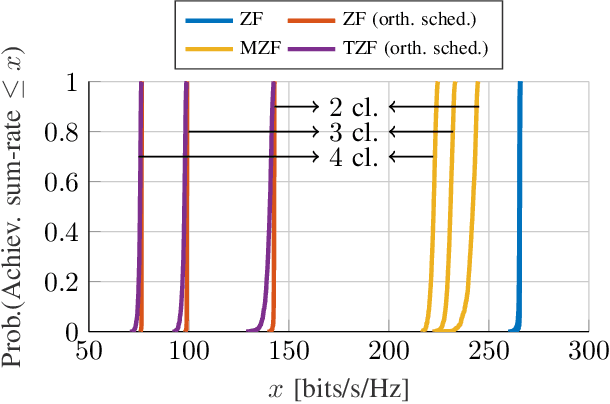
Abstract:Deploying antenna arrays with an asymptotically large aperture will be central to achieving the theoretical gains of massive MIMO in beyond-5G systems. Such extra-large MIMO (XL-MIMO) systems experience propagation conditions which are not typically observed in conventional massive MIMO systems, such as spatial non-stationarities and near-field propagation. Moreover, standard precoding schemes, such as zero-forcing (ZF), may not apply to XL-MIMO transmissions due to the prohibitive complexity associated with such a large-scale scenario. We propose two novel precoding schemes that aim at reducing the complexity without losing much performance. The proposed schemes leverage a plane-wave approximation and user grouping to obtain a low-complexity approximation of the ZF precoder. Our simulation results show that the proposed schemes offer a possibility for a performance and complexity trade-off compared to the benchmark schemes.
 Add to Chrome
Add to Chrome Add to Firefox
Add to Firefox Add to Edge
Add to Edge